Anatomy of a Suppressor
June 26th, 2022
5 minute read
The entire universe is physics. Whether it is the bottle of ketchup I dropped on the floor in the kitchen, the chaotic movement of air during a hurricane, or the orbital motion of planets around a star, everything can be mathematically distilled down to basic physical laws. These same immutable dicta govern what happens on the noisy end when we discharge a firearm.
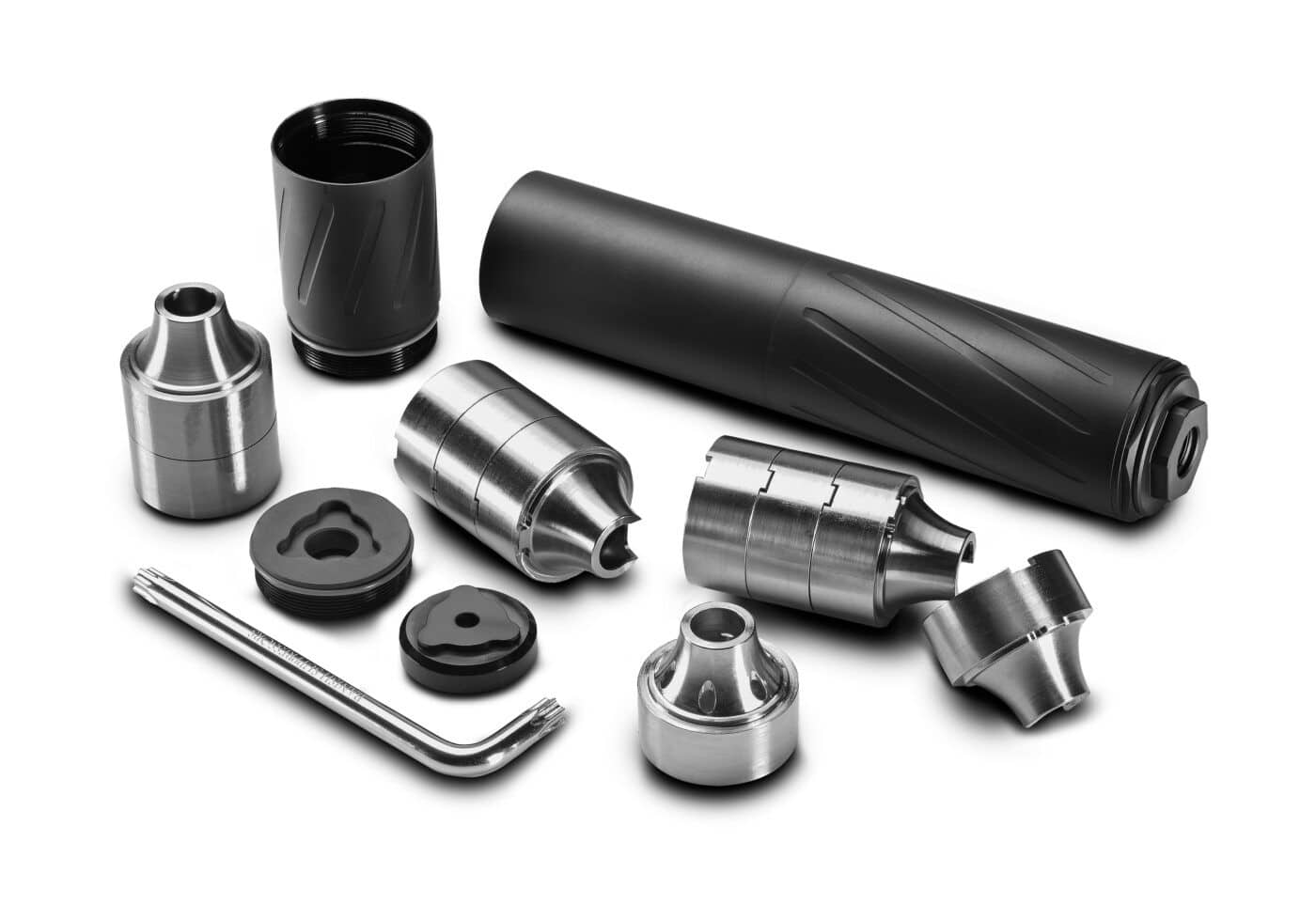
The Chinese blessed the world with gunpowder in the 9th century AD during the Tang Dynasty. The earliest documented chemical explosive, black powder is a mystical amalgam of sulfur, charcoal and potassium nitrate. The sulfur and charcoal serve as fuels. The potassium nitrate supplies the oxygen. The subsequent mischief this marvelous concoction wrought shaped the human experience.
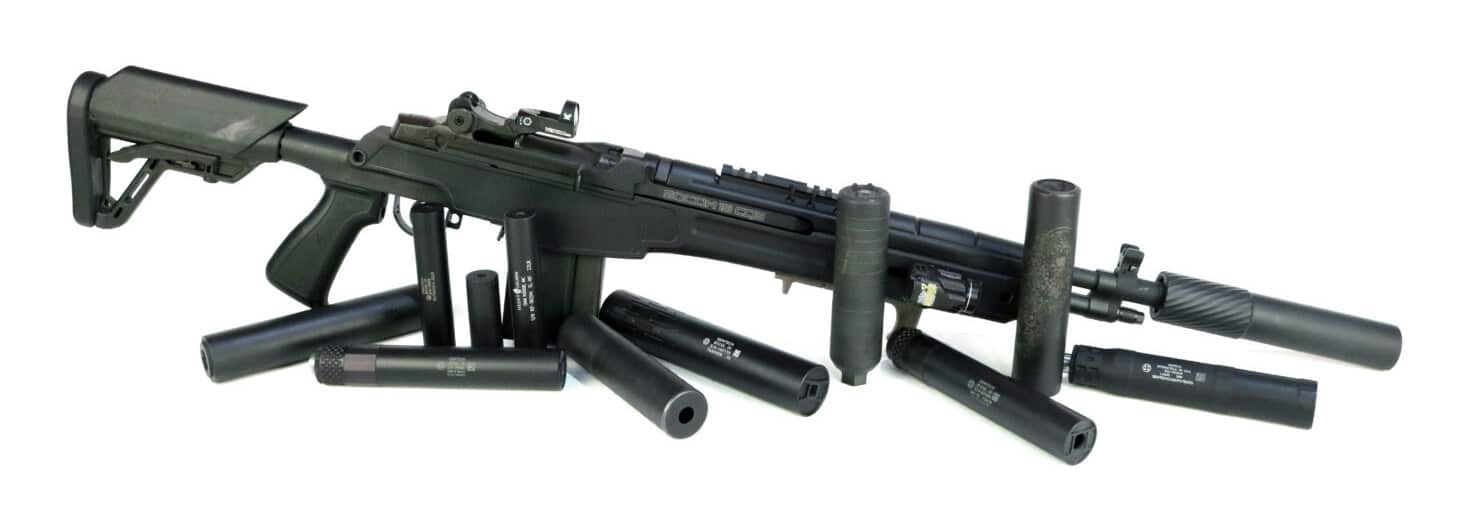
In fairly short order, folks had wrapped their gunpowder up inside a metal tube and used it to launch projectiles. The smallest examples would hide in a watch pocket. The largest cannon throw Volkswagen-sized explosive projectiles into the next county. In every single case, however, there results some degree of noise and flash at the muzzle.
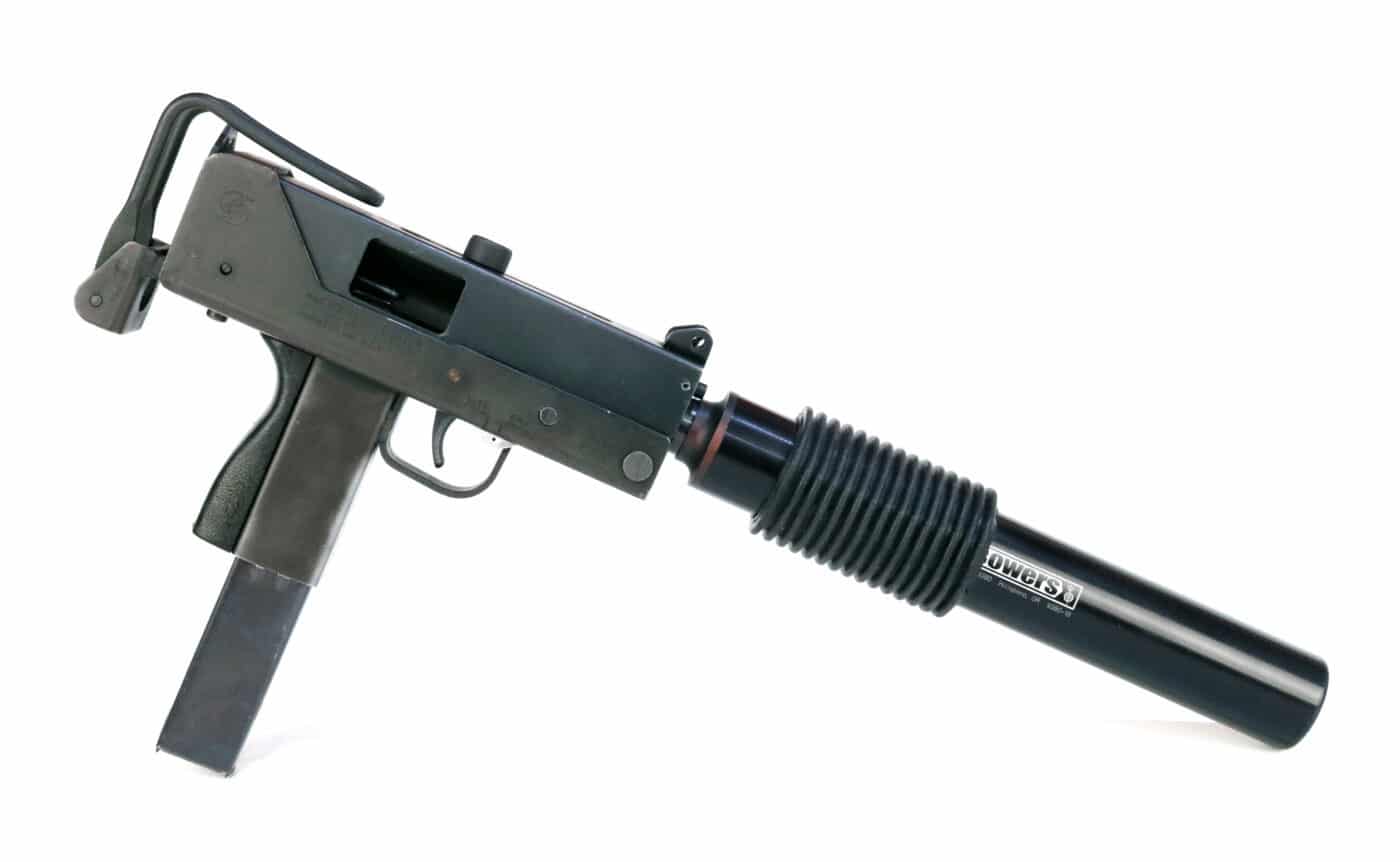
So how to address that? Starting in 1902, Hiram Percy Maxim began peddling the first commercial product designed to decrease the acoustic report and muzzle flash from a firearm. That historical tale is fascinating in its own right.
The Mission
As I mentioned, it all goes back to physics. No mechanical contrivance is truly silent, and the term firearm silencer is overly hopeful at best. The more realistic terms are sound suppressor or sound moderator. [Ed. note: Read more about suppressor vs. silencer here.] I don’t know where the Foley editors got that cute little mouse fart sound that all movie silencers seem to make, but I have never heard that in the real world. Sound suppressors simply diminish the cacophonous racket from your gun, not turn it off.
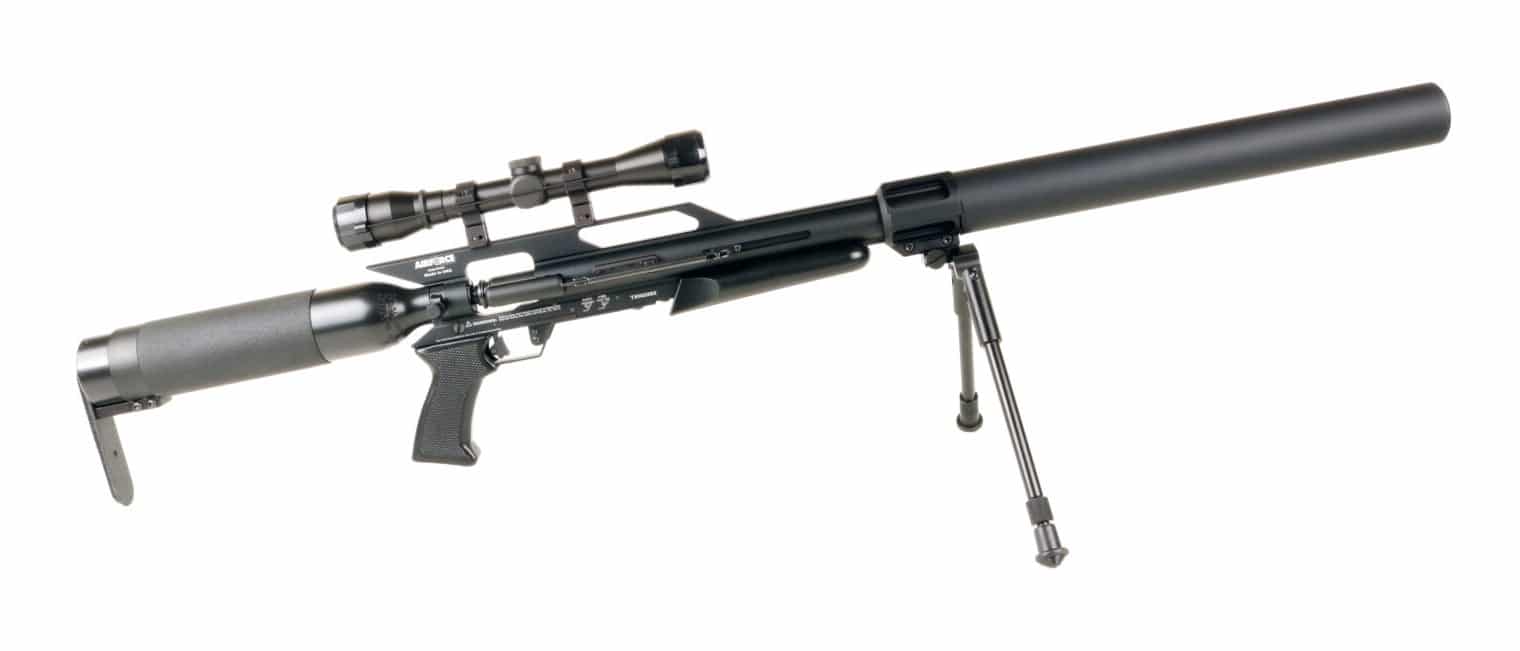
To effect this mission, the suppressor needs to both slow and cool the hot fast gases that exit the muzzle of your firearm alongside the projectile. While the archetypal applications are conventional handguns, submachineguns and rifles, there is a booming business (pun intended) in sound suppressors for airguns as well. While the particular interior geometries of these sundry devices are wildly different, the basic function is the same across the board.
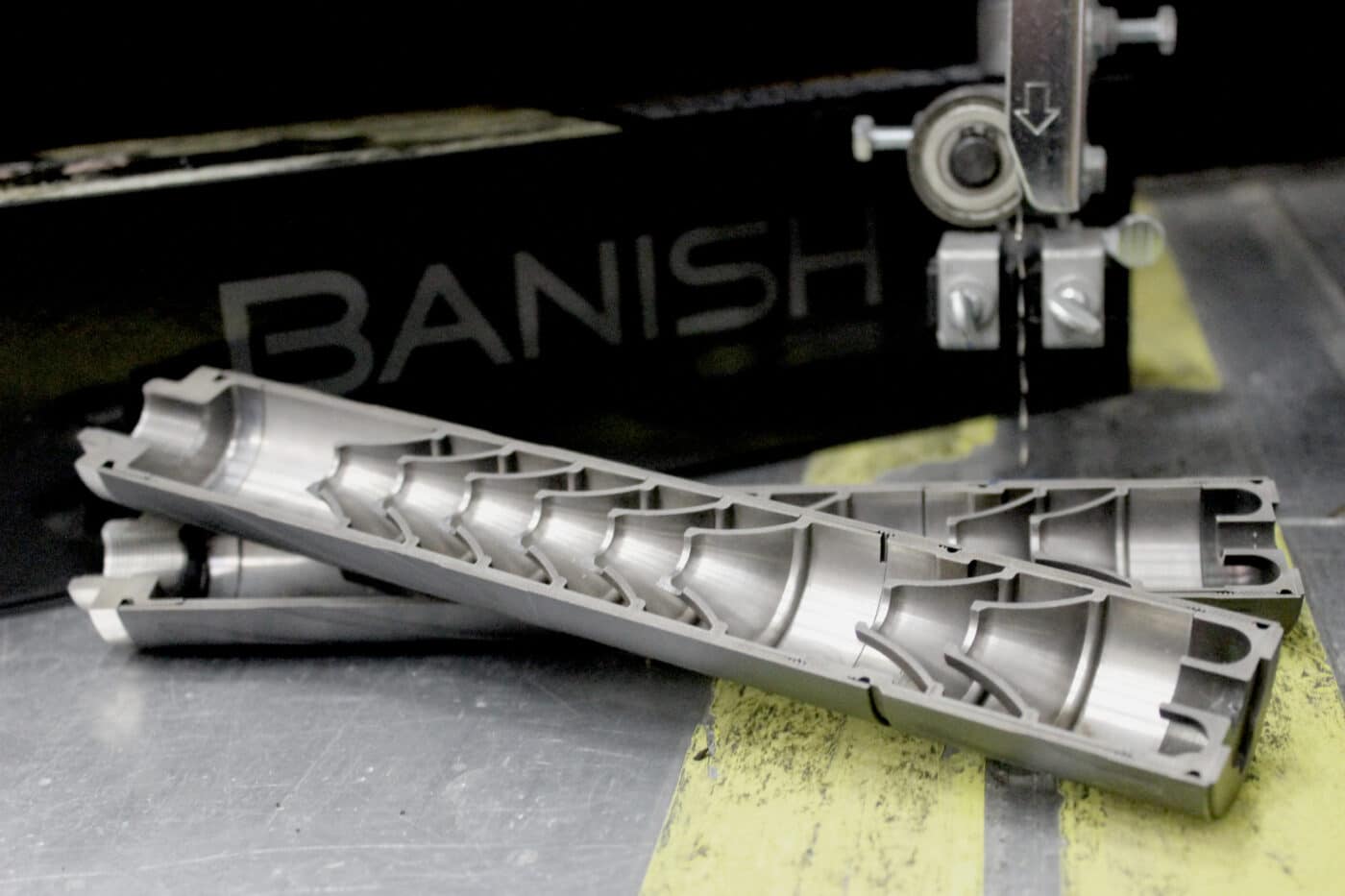
Regardless of the nature of the projectile, the expanding gases pushing it will be moving fast. This yields a troublesome racket the effects of which span the spectrum from annoying to painful. To mitigate these effects a sound suppressor will typically impede the flow of gas in a controlled fashion such that it is markedly decelerated before it reaches the outside world. While there are lots of different techniques to accomplish this task, the most common is through the use of baffles.
The science behind sound suppressors for firearms had its genesis in the design of mufflers for internal combustion engines, and much of the theory is interchangeable between the two applications. A series of metal baffles will typically strip gas away from the path of the bullet after it leaves the muzzle and force it to do work inside the body of the suppressor. This spills energy and subsequently slows everything down. Ideally, by the time the gas sees the light of day it is subsonic, lethargic and inoffensive.
This same forced and controlled expansion tends to cool muzzle gases as well. An adiabatic process is a thermodynamic exchange wherein no heat is transferred to the surrounding environment. While a sound suppressor definitely radiates excess heat after a few rounds are fired, the performance of the device can be viewed as self-contained for the purposes of its mission.
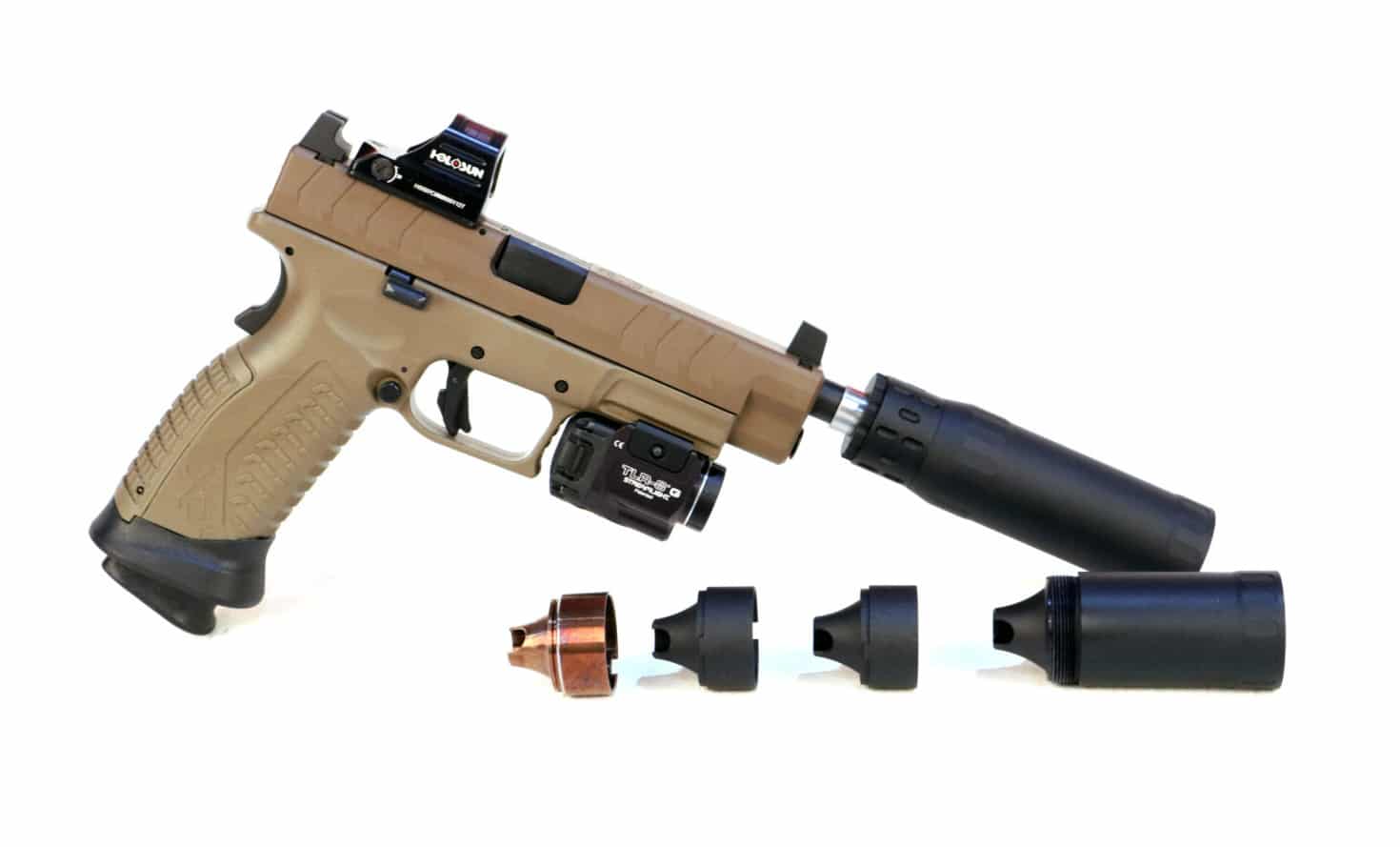
The physicist would take umbrage at this unrealistic assumption. The engineer would view it as a rounding error. Both will burn their fingers vigorously should they inadvertently brush the can after a vigorous Saturday afternoon at the range.
Practicalities and Unintended Consequences
Realistically speaking, sound suppressors do not allow you to infiltrate an evil despot’s lair and take out the Bad Guy without waking his nearby mignons. That only works in the movies. What a proper sound suppressor will do is help preserve your hearing, extinguish visible muzzle flash and make you a more neighborly shooter. It will also help preserve your capacity to communicate should you ever touch off your gun for real indoors.
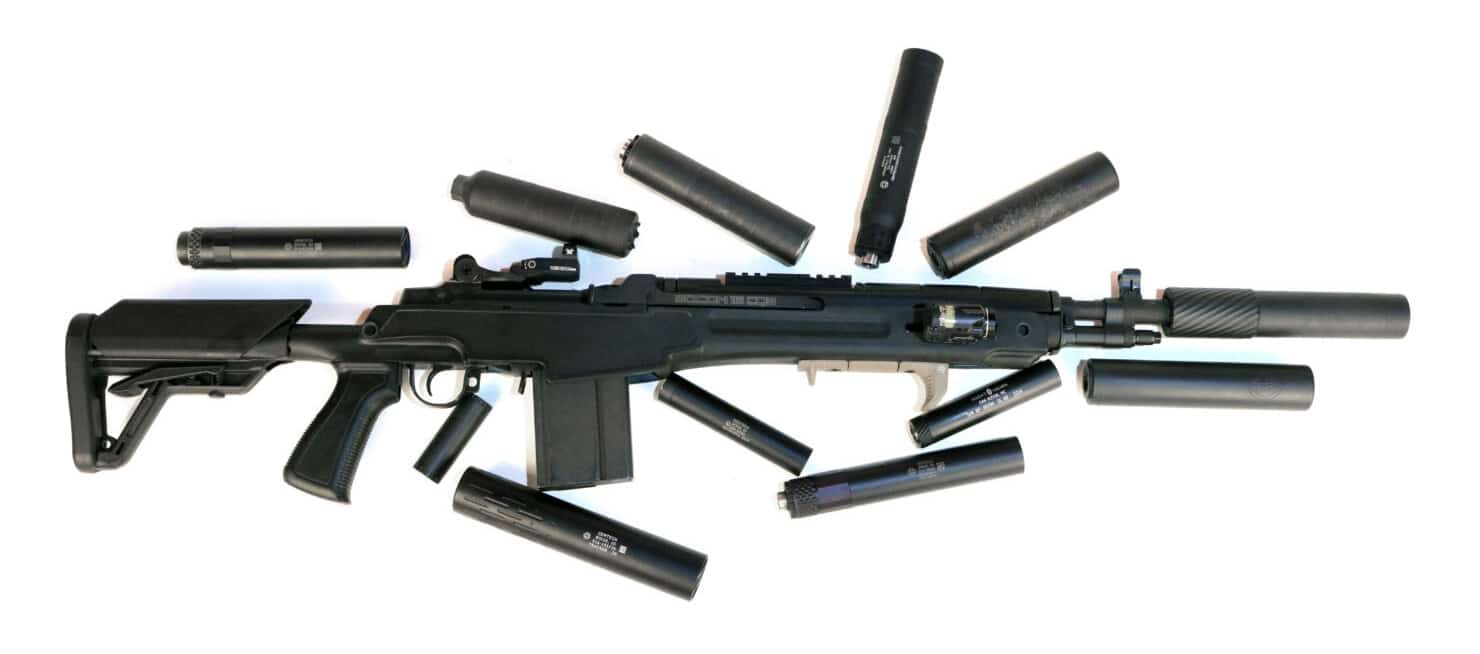
The downside is that the increased muzzle pressure will almost invariably push noxious gas back into your face while firing. However, while sound suppressors add a little inevitable weight to the end of your firearm, this addition will usually help dampen out barrel harmonics and ameliorate recoil, both of which improve accuracy. In the grand scheme, the benefits far outweigh the liabilities.
Sound suppressors make recreational shooting more convenient and fun. They also make tactical operations safer and more readily controlled. If you’re willing to put up with the expense and a little onerous government paperwork the addition of one of these delightful devices to your loadout will seriously amp up your fun on the range.
Editor’s Note: To learn more about suppressors and how to buy one, be sure to visit Silencer Central (see link below). Also, be sure to check out The Armory Life Forum, where you can comment about our daily articles, as well as just talk guns and gear. Click the “Go To Forum Thread” link below to jump in!
Join the Discussion
Featured in this article
Continue Reading
Did you enjoy this article?

 264
264







